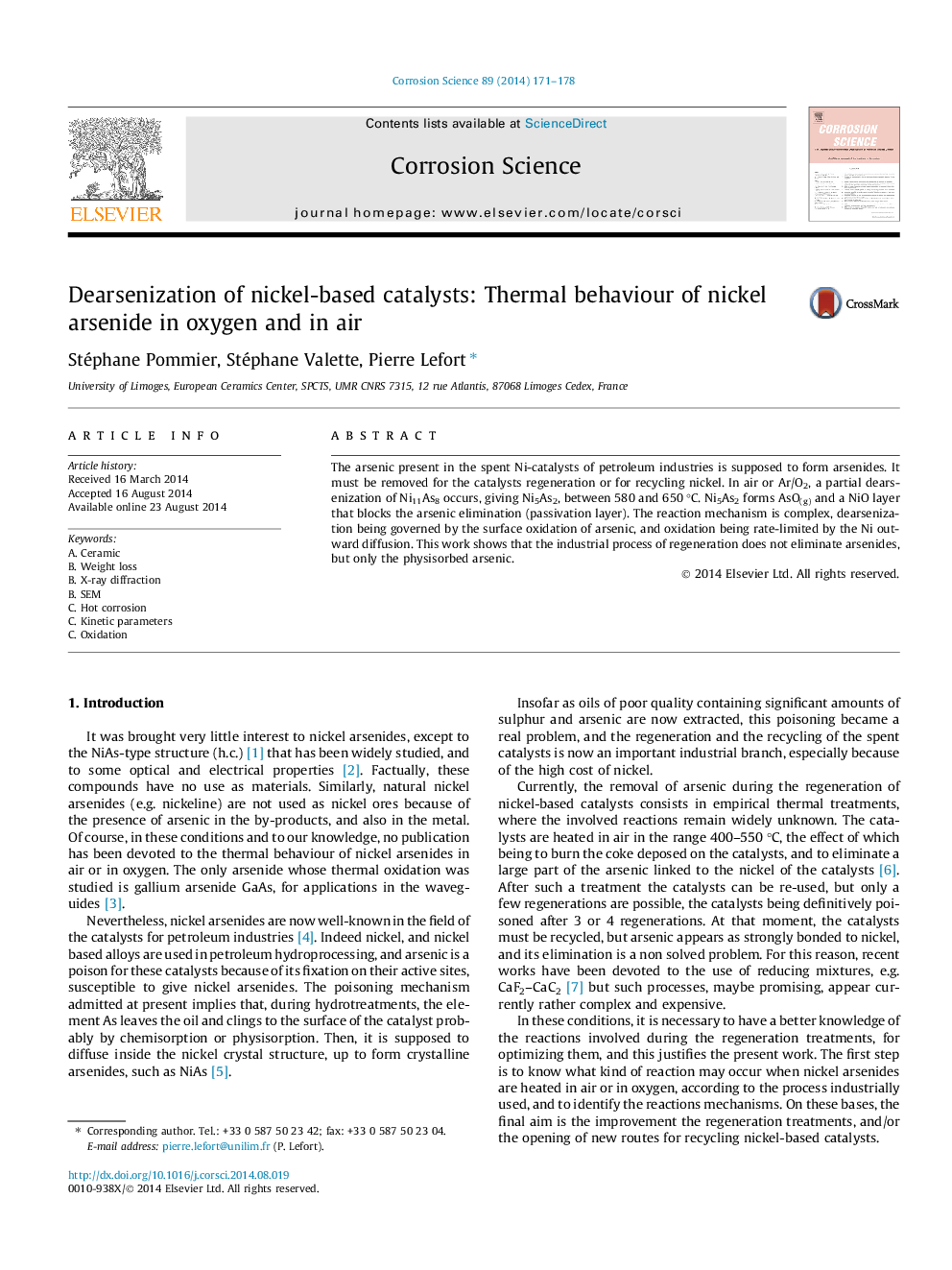| Article ID | Journal | Published Year | Pages | File Type |
|---|---|---|---|---|
| 7895519 | Corrosion Science | 2014 | 8 Pages |
Abstract
The arsenic present in the spent Ni-catalysts of petroleum industries is supposed to form arsenides. It must be removed for the catalysts regeneration or for recycling nickel. In air or Ar/O2, a partial dearsenization of Ni11As8 occurs, giving Ni5As2, between 580 and 650 °C. Ni5As2 forms AsO(g) and a NiO layer that blocks the arsenic elimination (passivation layer). The reaction mechanism is complex, dearsenization being governed by the surface oxidation of arsenic, and oxidation being rate-limited by the Ni outward diffusion. This work shows that the industrial process of regeneration does not eliminate arsenides, but only the physisorbed arsenic.
Keywords
Related Topics
Physical Sciences and Engineering
Materials Science
Ceramics and Composites
Authors
Stéphane Pommier, Stéphane Valette, Pierre Lefort,
